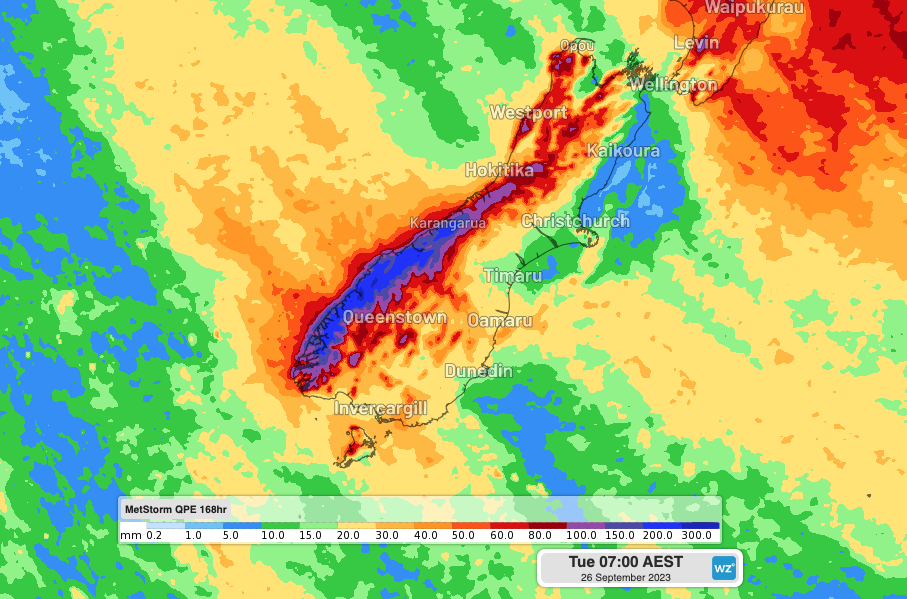Rain, storms in NZ North Island after Queenstown's worst flood in 24 years
The South Island of New Zealand copped a drenching last week, with hundreds of people evacuated as waters rose quickly in the popular tourist town.
A slow-moving low-pressure system lingered over the South Island of New Zealand last Thursday and Friday causing a multi-day deluge in the region.
The satellite loop below shows thick cloud encircling the low over the South Island on Thursday.
Video: Visible true colour satellite imagery showing cloud over New Zealand’s South Island on Thursday, September 21, 2023.
Queenstown declared a state of emergency after the town saw its largest daily rainfall totals in 24 years, with 87 mm of rain falling in the 24 hours to 9am NZDT on Friday, September 22.
This rainfall led to multiple debris and flooding events, with hundreds of people evacuated on Thursday night.
A Queenstown cemetery was also damaged in the floods last week.
The flooding and landslips have also caused an outbreak of cryptosporidium, a highly infectious parasite with locals encouraged to boil their water.
There were several other huge single day rainfall totals recorded on the South Island on Thursday, with Milford Sound recording 318.99 mm, Gore 102.6 mm and Mount Cook 50.4mm.
The rainfall caused multiple rivers to peak or overflow, with the Waikaia River flooding nearby farmland.
The map below shows that rainfall totals exceeding 300 mm have been observed in southwest New Zealand over the past week.

Image: 7-day rainfall observations leading up to 9am AEST on Tuesday, September 26, based on DTN quantitative precipitation estimates.
The system also brought significant snow to the South Island’s Alpine region last week, with The Remarkables recording 70cm of snow contributing to a healthy late-season snowpack depth of 90cm.
The rainfall has now shifted to the country’s North Island, with watches and warnings in place for rain, thunderstorms and wind as the low progresses further northeast. The latest NZ warnings are available here.